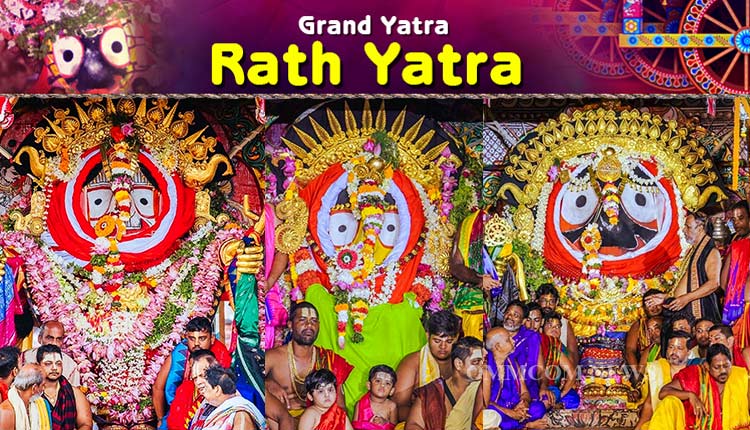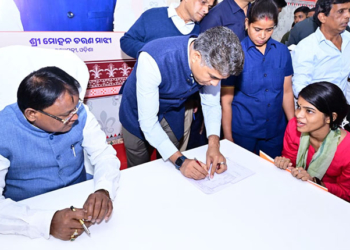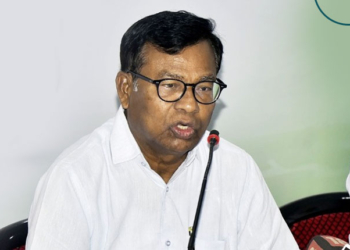Bhubaneswar: The Suna Besha, also revered as the Rajarajeswara Besha, is the most coveted and revered ornamentation of the deities at the Lord Jagannath Temple, drawing millions of devotees annually.
Observed on the auspicious Asadha Sukla Ekadasi Tithi, the Suna Besha is steeped in a captivating narrative that underlies its grand observance. The air is filled with joy and festivity as lakhs of devotees throng to catch a glimpse of the majestic deities, adorned in their golden finery. This sacred occasion is a testament to the enduring devotion and reverence that the Suna Besha embodies, making it a truly unforgettable experience for all who witness its splendour.
With the deities being readied to give darshan to their countless devotees, Ommcom News delves into the fascinating history and lesser-known facts surrounding this resplendent celebration.
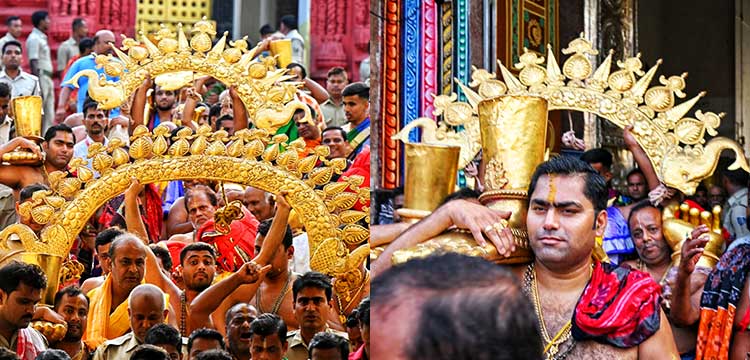
History
According to the Madala Panji, Gajapati Kapilendra Deba emerged victorious in the battle against the Deccan rulers in 1460, thanks to the divine blessings of Lord Jagannath and Maa Jayadurga. He returned with a vast treasure, loading 16 elephants with gold and other precious wealth. In a remarkable display of devotion, he donated the entire treasure to Lord Jagannath. Kapilendra Deba then expressed his desire to utilize the gold to create ornate ornaments for the deities. He shared his vision with Tadhau Karana, the custodian of the gold, who was entrusted with the task of bringing this vision to life.
However, Tadhau Karana made a humble request to Gajapati Kapilendra Deba. He noted that many devotees were unable to witness the divine Beshas (ornaments) within the temple. Therefore, he suggested that the Suna Besha (Golden Ornamentation) be displayed on the chariots during Bada Ekadashi, allowing devotees of all faiths to behold the resplendent deities. Kapilendra Deba graciously approved this proposal, and thus, the annual Suna Besha celebration was born.
During this grand occasion, the deities are adorned with approximately 208 kilograms of gold, a sight to behold. History says, during Kapilendra Deba’s reign, the deities were adorned with an astonishing 138 designs of gold ornaments. Although the number of designs has decreased over time, the deities are still majestically decorated with 20 to 30 types of gold ornaments, a testament to the enduring legacy of Kapilendra Deba’s devotion.
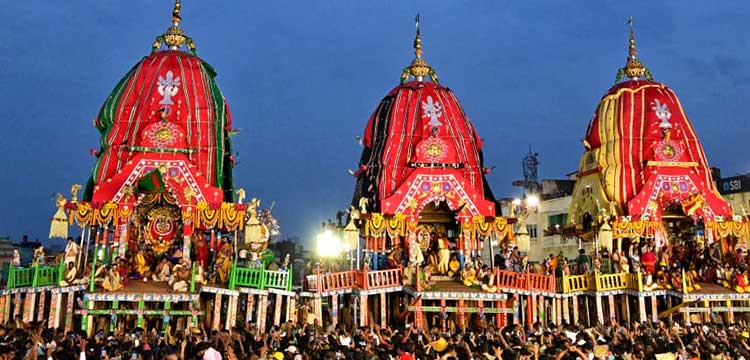
The gold ornaments are stored in the outer chamber of the Ratna Bhandar. Escorted by armed policemen and temple officials, bhandara mekap priests bring the jewellery and hand it over to Puspalaka and Daitapati priests. Here is the list of ornaments used in the besha.
- Suna Hasta – Golden Hand
- Suna Payar – Golden Feet
- Suna Mukuta – Golden Crown
- Suna Hasta – Golden Hand
- Suna Payar – Golden Feet
- Suna Mukuta – Golden Crown
- Suna Mayur Chandrika – A Golden Peacock Feather Used By Shri Jagannath
- Suna Chulapati – A Golden Ornament Worn Traditionally On The Forehead
- Suna Kundal – Golden Earring Of Hanging Round Ball Type
- Suna Rahurekha – A Half-Square-Shaped Golden Aura Around The Deities
- Suna Mala – Necklaces With Several Designs Made Of Gold. These include:
- Padma Mala –Necklace Of Lotus Flower
- Sevati Mala – Necklace Of Chrysanthemum Flower
- Agasti Mala – Necklace Of Moon Shaped Flower Design
- Kadamba Mala – Necklace Of Kadamba Flower
- Kante Mala –Necklace Big Gold Beads
- Mayur Mala – Necklace Shaped As Peacock Feathers
- Champa Mala –Necklace Of Champak Flower
- Suna Chakra – Golden Wheel
- Suna Gada – Golden Bludgeon
- Suna Padma – Golden Lotus
- Rupa Sankha – A Silver Conch




